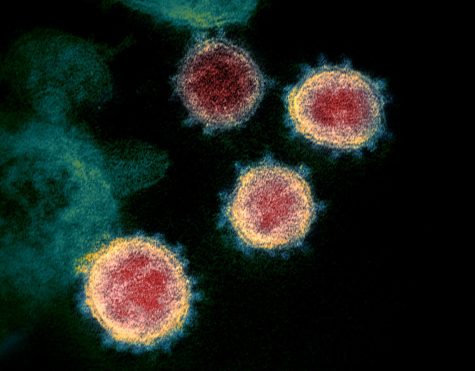PETA works to stop animal abuse
February 24, 2014
I’ll never forget the frigid December night when PETA’s fieldworkers found Noel. While many people were celebrating the holidays with their families inside their cozy homes, this sweet, sad dog was tethered to a thorny bush, shivering violently.
Scabs and sores covered her ears and tail, and she didn’t have any shelter or an ounce of fat on her body. She likely would have died in a matter of days.
PETA’s fieldworkers gained custody of Noel, rushed her to a veterinarian (who confirmed that she had been starved) and transferred her to a wonderful open-admission shelter.
Eventually, Noel was adopted by an adoring new guardian, who reported that she is the “sweetest, sloppiest kiss-giving, bedtime snuggler.” With Noel safe, PETA pursued justice, and her abuser was banned from ever owning animals again.
Noel is just one of thousands of animals PETA’s small hands-on division has helped. We welcome every animal brought to us, no matter how old, sick, injured or aggressive.
We transfer adoptable animals to high-traffic open-admission shelters—shelters that, unlike ‘no-kill’ shelters, never turn animals away—to find loving homes. And as we’ve shared on our blog and website many times, we provide animals whose bodies and spirits have deteriorated beyond hope with the dignity of a painless death.
PETA operates a ‘shelter of last resort’ for animals that have nowhere else to turn.
We take in dogs who have been chained 24/7 their entire lives and are suffering from congestive heart failure from advanced heartworm disease; feral cats who are ravaged by feline immunodeficiency virus or other contagious and fatal diseases; and animals who are otherwise suffering and unadoptable. For these animals, euthanasia is a kind act, often the only one they have ever known.
Few people realize that ‘no-kill’ shelters often refuse to accept animals like these. Turning away the desperate cases makes shelters’ euthanasia statistics seem low and appealing, but it leaves animals to die slowly and painfully on the streets or alone on a chain.
To end the homeless-animal crisis we need to address its root causes, not just mask the symptoms.
In 2013, PETA helped thousands of people keep animals they would otherwise have given up by providing free medical services, showing them how to manage behavioral problems and much more.
In the last year alone, PETA spayed or neutered 11,229 dogs and cats, preventing generations of animals from ending up on the streets or in shelters. We recently sterilized our 100,000th animal since 2001—a victory we’re celebrating by holding a 24-hour spay-a-thon.
Everyone who cares about dogs and cats can help by working to pass spay-and-neuter laws, banning sales of animals at pet shops, and sterilizing their own animals and helping friends and neighbors get their animals ‘fixed.’
By rolling up our sleeves together, we can end animal homelessness and reach the day when every cat and dog has the loving home they deserve.
– The opinions expressed in this guest commentary are not necessarily those of the staff of The Daily Evergreen or those of Student Publications





















